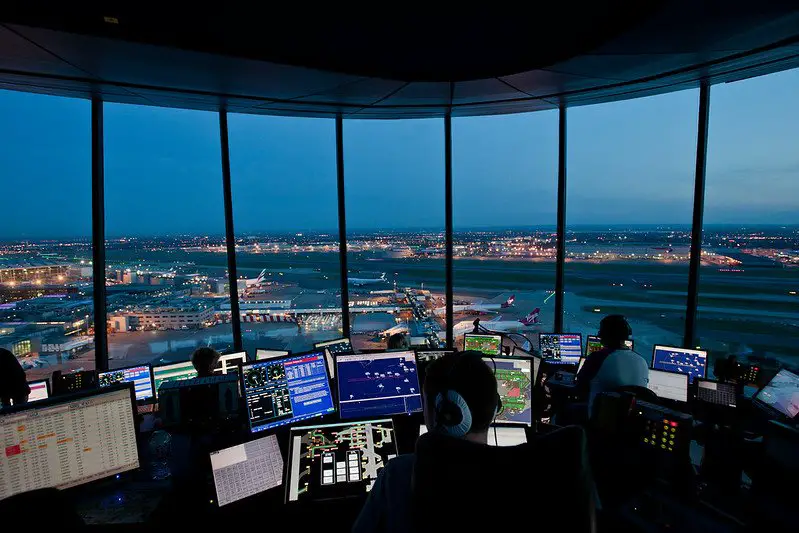

This is expected to increase demand for air traffic controllers over the coming decade. With modern air travel becoming more affordable, the number of planes in the skies has increased. Air traffic controllers may need to work during all shifts, on weekends, and even on holidays to monitor and direct incoming and outgoing flights from popular airports. Most air traffic controllers work full-time schedules, and some work overtime. These air traffic controllers-called tower controllers-keep airport personnel and passengers safe during ground travel, and reduce the number of delays related to vehicles navigating airport runways and taxiways. They instruct ground vehicles to vacate areas where planes are landing or taxiing, tell planes which runway to use for takeoff, inform pilots of gate changes, and direct pilots to park at the correct hangar. While some air traffic controllers are responsible for controlling sky traffic, other direct traffic on the ground at airports. They are exceptional communicators who respond to issues quickly and calmly. This may include forming alternative flight paths, diverting planes to alternative runways or airports, or asking planes to stay on the ground or in the air until situations are resolved. When unplanned issues arise-runways close or are congested, pilots must alter their flight plans, or severe weather hits-air traffic controllers are responsible for informing affected pilots and working with pilots to create alternate plans. They also work to prevent delays by offering safe, alternative flight plans to pilots to reduce congestion on busy runways. With hundreds or thousands of aircraft in the skies at any one time, air traffic controllers are responsible for making sure that all aircraft stay a safe distance away from each other to prevent crashes. They monitor the skies around an airport, communicating with pilots about flight plans. Direct ground traffic on airport taxiways, runways, and hangarsĪir traffic controllers play a critical role in ensuring safe air travel.Communicate with pilots about delays, closures, severe weather, or any other information that could impact flight plans.Find alternative pathways for flights to reduce traffic and airport delays.Monitor incoming and outgoing flights and flightpaths to ensure all aircraft fly at a safe distance from each other.Communicate with pilots and other personnel about flight plans, flight paths, takeoffs, and landings.The following job responsibilities are common for individuals in air traffic controller roles:


 0 kommentar(er)
0 kommentar(er)
